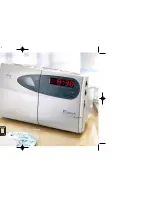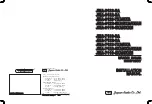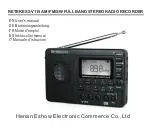
23 mm Transponder Reference Manual
25 July 1996
Page 8 of 22
4.2 Write and Program
A new identification number can be written (programmed) into a R/W transponders in the following
manner: After the charge phase the R/W transponder enters the write mode providing the reader starts to
modulate the field by switching the transmitter on and off (TXCT-). Modulation index of this amplitude
modulation is 100%. The duration of the off-phase defines whether a low bit or a high bit is being
transmitted (Pulse Width Modulation). Writing means, the transponder shifts the received bits into a shift
register. After the write phase the reader's transmitter is switched on for a certain time (programming
time) in order to energize the process of programming the shift register data into the EEPROM. All 80
bits are programmed simultaneously into the EEPROM. Once the data is programmed into the EEPROM
the transponder automatically sends back the captured data to the reader to allow a security check, this
process takes place when the transmitter is switched off. Each read unit can be used as a write unit
through software change only. No hardware changes are required.
Figure 7 describes the write function by showing the transmitter (reader) RF output signal and the
transponder RF input signal. Figure 8 shows the TXCT- signal of the reader (transmitter) during the
write and program function. The data transmission format of the write mode is described in figure 9.
Charge:
Continuous RF Module Transmitter output Signal
Write:
Pulse width modulation of the RF module transmitter output signal
Program:
Continuous RF module transmitter output signal
Read:
Frequency Shift Keying of the transponder resonant circuit oscillation
Figure 7: Charge, Write and Program Principle used for TIRIS, showing the voltage at the
exciter (reader) and transponder antenna coil








































